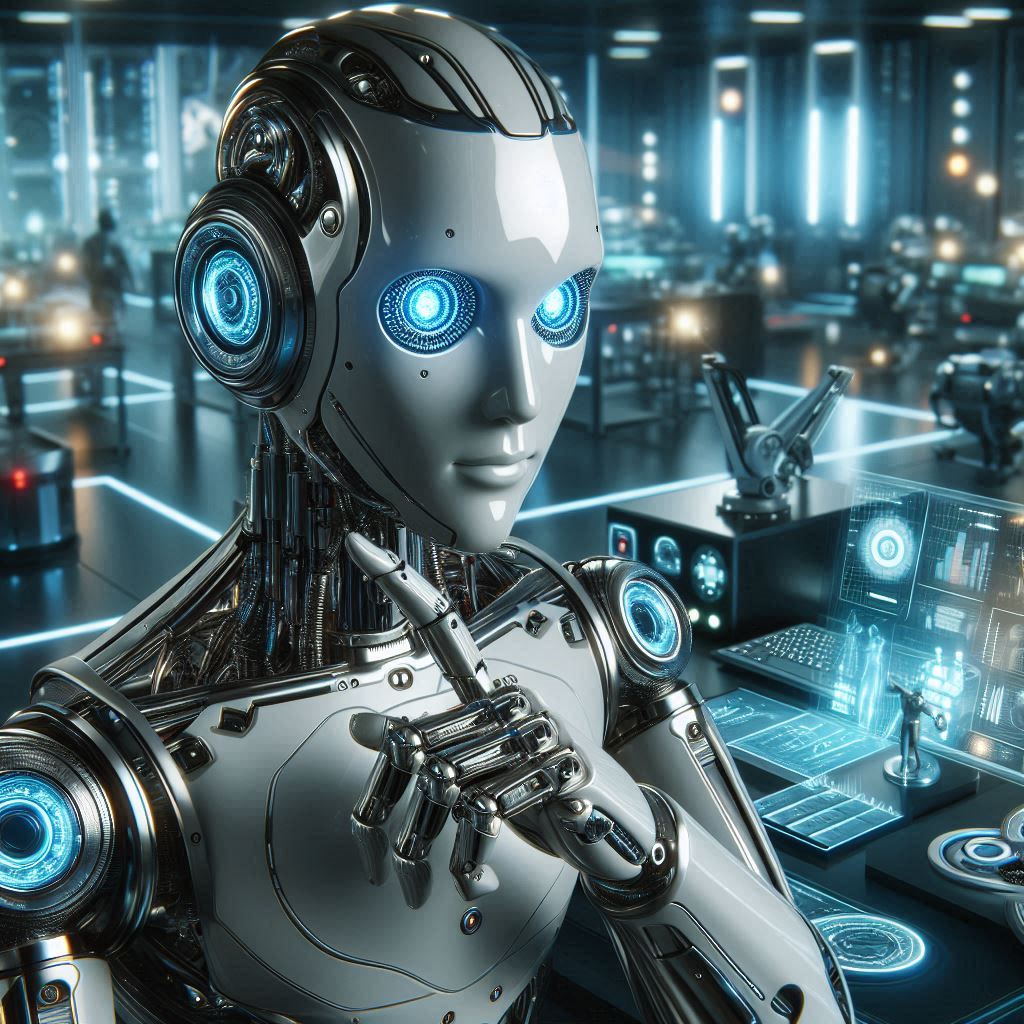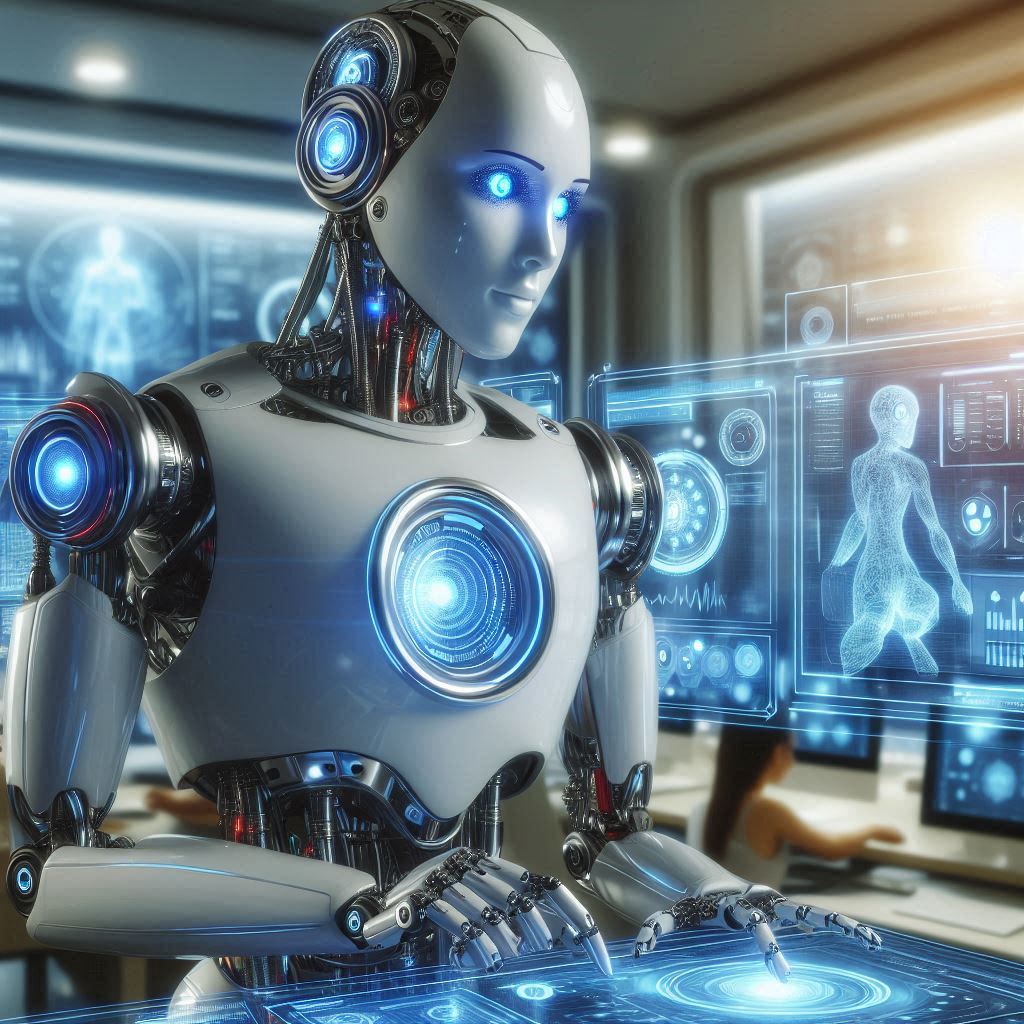The Tesla Robot, also known as Optimus, is one of the most exciting innovations in the world of robotics and artificial intelligence (AI). Developed by Tesla Inc., the humanoid robot is set to revolutionize industries and reshape the way we live and work. In this blog post, we will explore what the Tesla robot is, what makes it unique, and what its future prospects look like in the world of technology and automation.
What is the Tesla Robot?
The Tesla Robot is a humanoid robot designed to assist with various tasks, particularly those that are repetitive, dangerous, or require laborious effort. Elon Musk, the CEO of Tesla, introduced the concept of the Tesla Bot in 2021, with the goal of creating a robot that could work alongside humans in both professional and personal settings.
Standing about 5’8″ tall and weighing 125 pounds, the Tesla Bot is powered by the same AI systems used in Tesla’s self-driving cars, enabling it to process information and navigate through the world around it. It is designed to perform a range of tasks, such as household chores, shopping, or even working in industries like manufacturing and logistics.

Key Features of the Tesla Robot
- Humanoid Design
The Tesla Robot’s design is based on the human form, allowing it to perform tasks such as lifting, carrying, and moving objects. It is designed to mimic human movement, with the ability to walk, bend, and even interact with objects in its environment. - Advanced AI Integration
The Tesla Bot uses Tesla’s Full Self-Driving (FSD) technology, which includes neural networks and computer vision. This enables the robot to understand its surroundings, avoid obstacles, and make decisions in real-time. - Safety and Efficiency
One of the primary concerns with robots is safety, and Tesla has ensured that the Tesla Bot is designed to be non-threatening. Its movements are calculated and gentle to avoid any potential harm to humans, making it suitable for both workplaces and homes.
What Makes the Tesla Robot Unique?
The Tesla Robot is unique in several ways, thanks to the advanced technologies Tesla has integrated into its design and functionality.
1. Cutting-Edge AI and Machine Learning
What sets the Tesla Robot apart from other humanoid robots is the use of Tesla’s AI and machine learning systems. Unlike traditional robots that rely on pre-programmed instructions, the Tesla Bot can learn and adapt to new environments by processing visual, auditory, and sensory data in real-time. This makes it capable of performing tasks that are unpredictable and dynamic, such as navigating crowded environments or handling delicate objects.
2. Integration with Tesla’s Existing Ecosystem
Tesla’s existing infrastructure plays a significant role in making the Tesla Robot unique. The same AI algorithms and sensor systems used in Tesla vehicles are used in the Tesla Bot, giving it the ability to operate autonomously. This integration also means that the robot could eventually work seamlessly alongside Tesla cars and other Tesla technologies, such as the Tesla Powerwall or solar panels, to improve energy efficiency and home automation.
3. Focus on Human-Robot Collaboration
Unlike many robots designed to replace human workers, the Tesla Bot is being developed with the intention of complementing human labor. It is designed to assist with mundane or dangerous tasks while humans focus on more creative, strategic, or skilled work. This focus on collaboration sets the Tesla Bot apart from other robots that may threaten job security in certain sectors.

What Are the Future Prospects of the Tesla Robot?
The potential for the Tesla Robot is enormous. While it’s still in its early stages, there are several key areas where the Tesla Bot could have a profound impact.
1. Revolutionizing Industries
One of the most significant prospects for the Tesla Bot lies in its ability to revolutionize industries such as manufacturing, logistics, and healthcare. In manufacturing, the Tesla Bot could handle tasks like assembly, inspection, and maintenance, reducing the need for human labor in hazardous environments. In logistics, it could assist in sorting and transporting goods in warehouses, speeding up operations and reducing costs.
2. Impact on Daily Life
In addition to industrial applications, the Tesla Bot could become a part of everyday life. Imagine a world where your robot can help with housework, grocery shopping, and even assist elderly individuals with mobility or personal care. As the technology improves, the Tesla Bot could transform how we live and interact with technology, becoming an everyday helper in households across the world.
3. Ethical and Societal Considerations
With such powerful technology, there will undoubtedly be ethical concerns surrounding the Tesla Robot. As robots become more capable of taking over jobs, there will be questions about job displacement and the impact on the workforce. Additionally, there will need to be regulations in place to ensure that Tesla Bots are used responsibly and don’t pose a risk to privacy, safety, or human rights.
Tesla will need to collaborate with governments, businesses, and ethicists to address these concerns and ensure that the Tesla Bot benefits society as a whole, rather than exacerbating inequalities.
4. Continuous Technological Advancements
As AI, machine learning, and robotics continue to evolve, the Tesla Bot will become even more capable. Tesla’s innovations in battery technology will also play a crucial role in enhancing the robot’s performance, allowing it to operate for longer periods and handle more complex tasks.
5. Integration with Other Tesla Products
One of the most exciting future prospects of the Tesla Bot is its potential integration with other Tesla products. Imagine a world where the Tesla Bot works alongside your Tesla vehicle to provide additional services, such as maintenance, transportation, or personal assistance. Additionally, the Bot could interface with Tesla’s energy products, helping optimize energy use in your home and improving overall efficiency.
Conclusion
The Tesla Robot is a groundbreaking innovation that has the potential to transform industries, improve daily life, and change the way we interact with technology. With its advanced AI, humanoid design, and focus on human-robot collaboration, the Tesla Bot stands out as a unique player in the field of robotics.
As Tesla continues to develop the robot, its future prospects look bright. From enhancing efficiency in workplaces to becoming a trusted assistant in our homes, the Tesla Bot could soon be a ubiquitous presence in our lives. However, its success will depend on how well the technology evolves and how society adapts to the integration of such powerful tools.
FAQ
The Tesla Robot, also known as Optimus, is a humanoid robot developed by Tesla Inc. that uses advanced AI and robotics to perform various tasks. It is designed to assist with repetitive, dangerous, or mundane tasks in both industrial and household settings.
The Tesla Robot works using Tesla’s Full Self-Driving (FSD) technology, which incorporates neural networks, computer vision, and AI to navigate its environment. It processes sensory information in real-time to interact with its surroundings, perform tasks, and adapt to new situations.
The Tesla Robot is unique due to its integration with Tesla’s AI systems, its humanoid design, and its focus on human-robot collaboration. Unlike many robots that replace human workers, the Tesla Bot is designed to complement human labor, making it ideal for repetitive and hazardous tasks while still allowing humans to focus on more complex work.
The Tesla Robot is designed to handle a wide range of tasks, from household chores like cleaning and shopping to industrial work like assembly, inspection, and maintenance. It can also assist in sectors like healthcare, logistics, and construction.
The Tesla Robot stands about 5’8″ tall, weighs 125 pounds, and can carry up to 45 pounds. It features advanced AI and robotic actuators that allow it to perform human-like movements, such as walking, lifting, and interacting with objects.
The Tesla Robot uses AI to process sensory data and make decisions in real-time. It utilizes Tesla’s self-driving car technology, including computer vision and neural networks, to navigate and interact with its environment safely and efficiently.
The Tesla Robot has the potential to revolutionize industries like manufacturing, logistics, healthcare, construction, and more. In these sectors, it can assist with repetitive tasks, improve efficiency, and reduce human involvement in dangerous jobs.
Yes, the Tesla Robot could be used in homes to assist with tasks like cleaning, shopping, and even helping elderly or disabled individuals with mobility and personal care. It could become a helpful companion in everyday life.
Ethical concerns related to the Tesla Robot include job displacement, the impact on the workforce, privacy issues, and ensuring the robot is used safely and responsibly. Regulations and ethical guidelines will be necessary to ensure its positive integration into society.
The future prospects of the Tesla Robot include its potential for widespread industrial use, daily consumer applications, and integration with other Tesla products like electric vehicles and energy solutions. As AI and robotics technology improve, the Tesla Bot will become even more capable, potentially transforming industries and daily life.
Read More:


1 thought on “The Future of the Tesla Robot: What’s Next for AI and Robotics?”